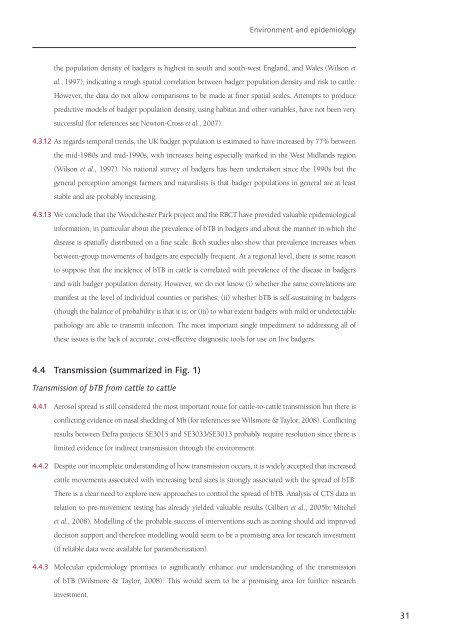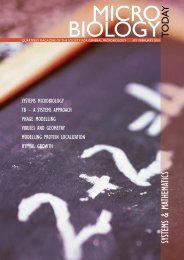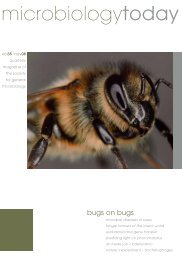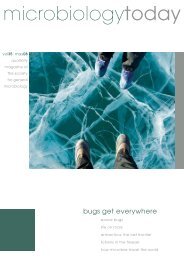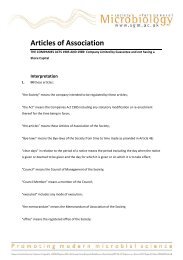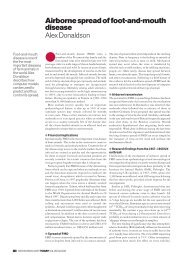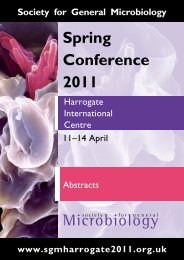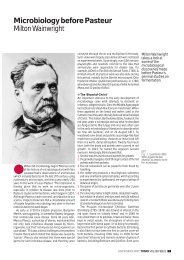final report - ARCHIVE: Defra
final report - ARCHIVE: Defra
final report - ARCHIVE: Defra
You also want an ePaper? Increase the reach of your titles
YUMPU automatically turns print PDFs into web optimized ePapers that Google loves.
Environment and epidemiology<br />
the population density of badgers is highest in south and south-west England, and Wales (Wilson et<br />
al., 1997), indicating a rough spatial correlation between badger population density and risk to cattle.<br />
However, the data do not allow comparisons to be made at finer spatial scales. Attempts to produce<br />
predictive models of badger population density, using habitat and other variables, have not been very<br />
successful (for references see Newton-Cross et al., 2007).<br />
4.3.12 As regards temporal trends, the UK badger population is estimated to have increased by 77% between<br />
the mid-1980s and mid-1990s, with increases being especially marked in the West Midlands region<br />
(Wilson et al., 1997). No national survey of badgers has been undertaken since the 1990s but the<br />
general perception amongst farmers and naturalists is that badger populations in general are at least<br />
stable and are probably increasing.<br />
4.3.13 We conclude that the Woodchester Park project and the RBCT have provided valuable epidemiological<br />
information, in particular about the prevalence of bTB in badgers and about the manner in which the<br />
disease is spatially distributed on a fine scale. Both studies also show that prevalence increases when<br />
between-group movements of badgers are especially frequent. At a regional level, there is some reason<br />
to suppose that the incidence of bTB in cattle is correlated with prevalence of the disease in badgers<br />
and with badger population density. However, we do not know (i) whether the same correlations are<br />
manifest at the level of individual counties or parishes; (ii) whether bTB is self-sustaining in badgers<br />
(though the balance of probability is that it is; or (iii) to what extent badgers with mild or undetectable<br />
pathology are able to transmit infection. The most important single impediment to addressing all of<br />
these issues is the lack of accurate, cost-effective diagnostic tools for use on live badgers.<br />
4.4 Transmission (summarized in Fig. 1)<br />
Transmission of bTB from cattle to cattle<br />
4.4.1 Aerosol spread is still considered the most important route for cattle-to-cattle transmission but there is<br />
conflicting evidence on nasal shedding of Mb (for references see Wilsmore & Taylor, 2008). Conflicting<br />
results between <strong>Defra</strong> projects SE3015 and SE3033/SE3013 probably require resolution since there is<br />
limited evidence for indirect transmission through the environment.<br />
4.4.2 Despite our incomplete understanding of how transmission occurs, it is widely accepted that increased<br />
cattle movements associated with increasing herd sizes is strongly associated with the spread of bTB.<br />
There is a clear need to explore new approaches to control the spread of bTB. Analysis of CTS data in<br />
relation to pre-movement testing has already yielded valuable results (Gilbert et al., 2005b; Mitchel<br />
et al., 2008). Modelling of the probable success of interventions such as zoning should aid improved<br />
decision support and therefore modelling would seem to be a promising area for research investment<br />
(if reliable data were available for parameterization).<br />
4.4.3 Molecular epidemiology promises to significantly enhance our understanding of the transmission<br />
of bTB (Wilsmore & Taylor, 2008). This would seem to be a promising area for further research<br />
investment.<br />
31


